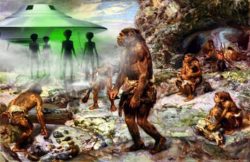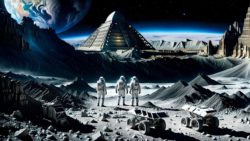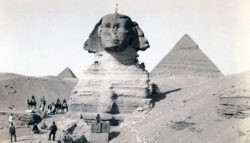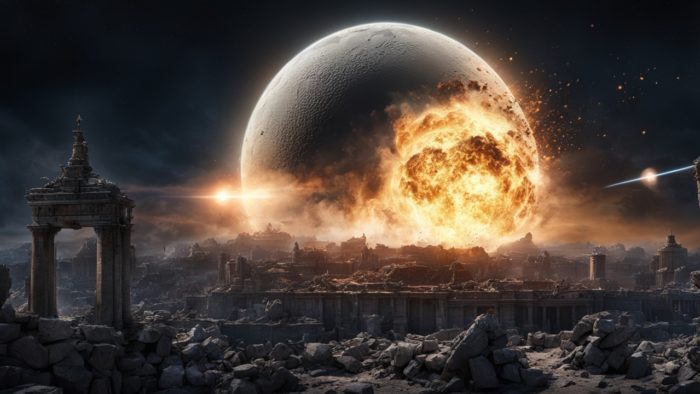
Was There A Time In Human History When The Moon Didn’t Exist?
- By
- August 20, 2024
- 7 min read
- Expert Opinion
- Posted in
- Space, Our Solar System
Throughout human history, the Moon has been a constant and captivating presence in the night sky—a sight so familiar that many of us might take it for granted. But could there have been a time in Earth’s distant and enigmatic past when the Moon didn’t exist? If so, how and when did it appear, and what—or who—was responsible for its arrival? The Moon is undoubtedly a mesmerizing and mysterious celestial body, one that has fascinated humanity from the dawn of civilization to the present day.
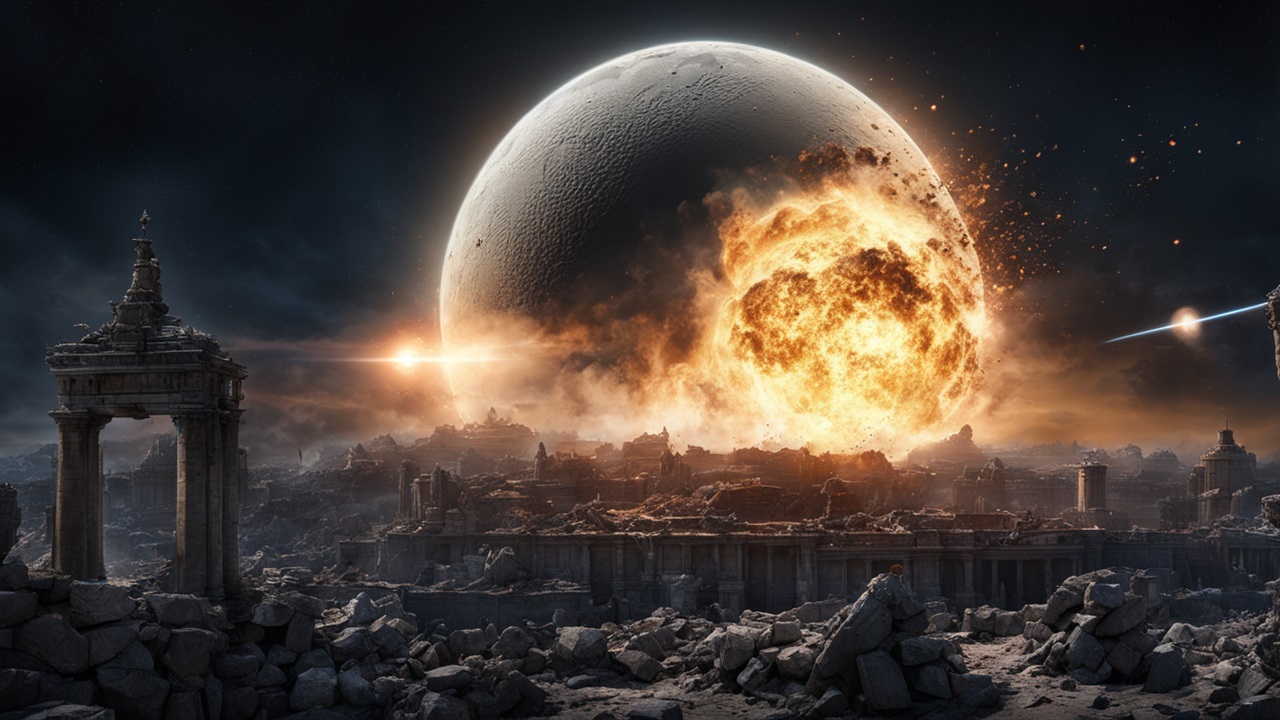
Could there really have been an era before the Moon? A time, perhaps witnessed by now-lost civilizations, when our celestial neighbor was absent from the sky? Science and our understanding of the universe suggest that life as we know it would be impossible without the Moon. Yet ancient legends—stories that many researchers believe hold fragments of truth—speak of such a time. According to researcher and author Michael Tellinger, this may represent humanity’s most distant collective memory.
Indeed, we have looked before at the Moon and its mysterious past, as well as the many conspiracies associated with it. There is, though, perhaps none more outlandish – and preposterous to some, no doubt – that there was a time in human history when the moon wasn’t present in our skies. We know that the Moon makes life on Earth possible and that without it, the planet would be a drastically different place. However, given that some life could exist on Earth without the moon, could humans, somehow, have existed during such a speculative time also? Indeed, if there were any truth to such claims of a time without the moon, it would force us to reevaluate not only our history but our understanding of almost everything around us.
Contents
A Civilization That Thrived “When The Moon Did Not Exist!”
Some of the most well-known ancient accounts suggesting a time when the Moon was absent from Earth’s skies come from the Greek philosopher Aristotle. In recounting the history of the Arcadian region in Greece, Aristotle refers to the Pelasgians, a people who, he wrote, had lived there “since very old times,” during an era “when the Moon did not exist.” [1]
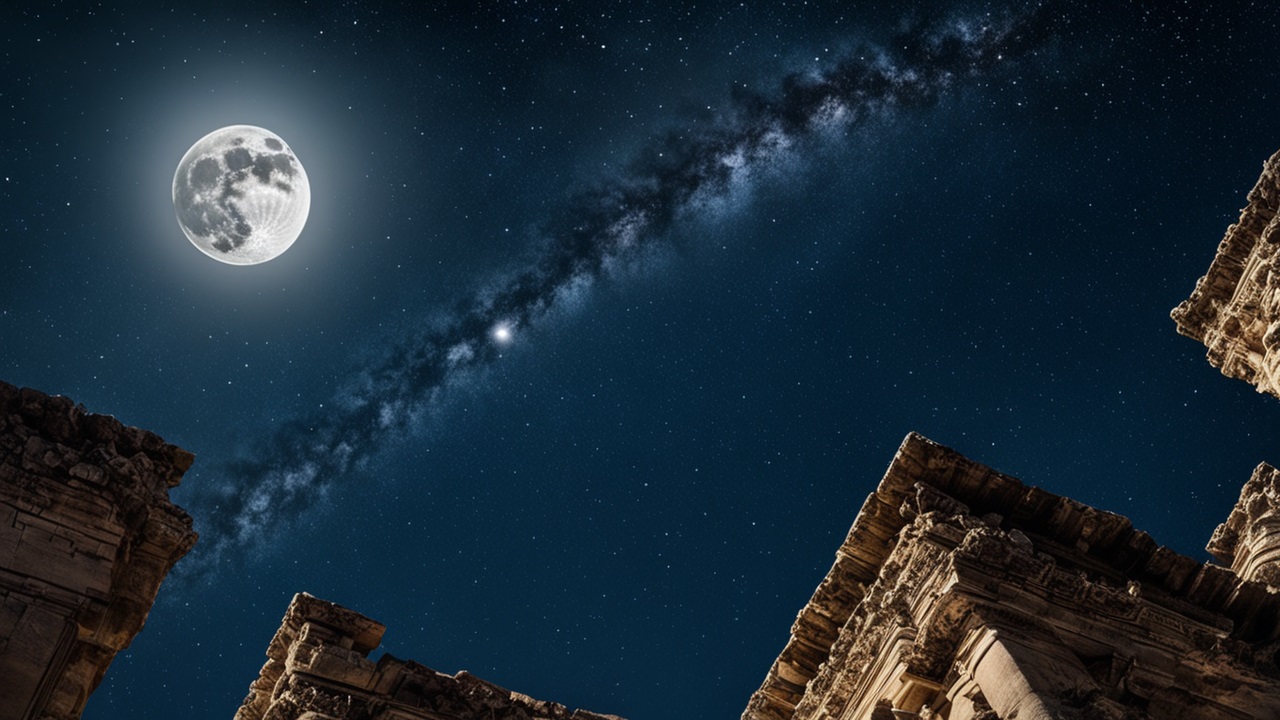
Another ancient Greek philosopher, Apollonios, also spoke of a time before the Moon, when not all celestial objects were present in the sky, and the only people who existed were the Pelasgians, residing in the mountains of Arcadia.
This raises intriguing questions about the mysterious Pelasgians. If they did indeed exist, might they not have been entirely human, or even human at all? After all, our current understanding of life suggests that it would be impossible without the Moon. We will explore this notion further as we examine similar legends of a time before the Moon from other parts of the world.
We might also wonder just how far back in time these Pelasgians lived—likely much further than mere tens of thousands of years ago, possibly extending into the hundreds of thousands or even millions of years.
Many Ancient Writings Of A Time Before The Moon
Plutarch, for instance, describes a time “before the birth of Zeus” when the “Arcadians possessed their land,” noting that “these folk are older than the Moon.” Other ancient writings also reference this period. Lukianos, in his work Astrology, mentions that the Arcadians “foolishly claim they are older than the Moon,” while Hippolytus records that “Arcadia brought forth Pelasgus,” the ancestor of the Pelasgians, who is “of greater antiquity than the Moon.”
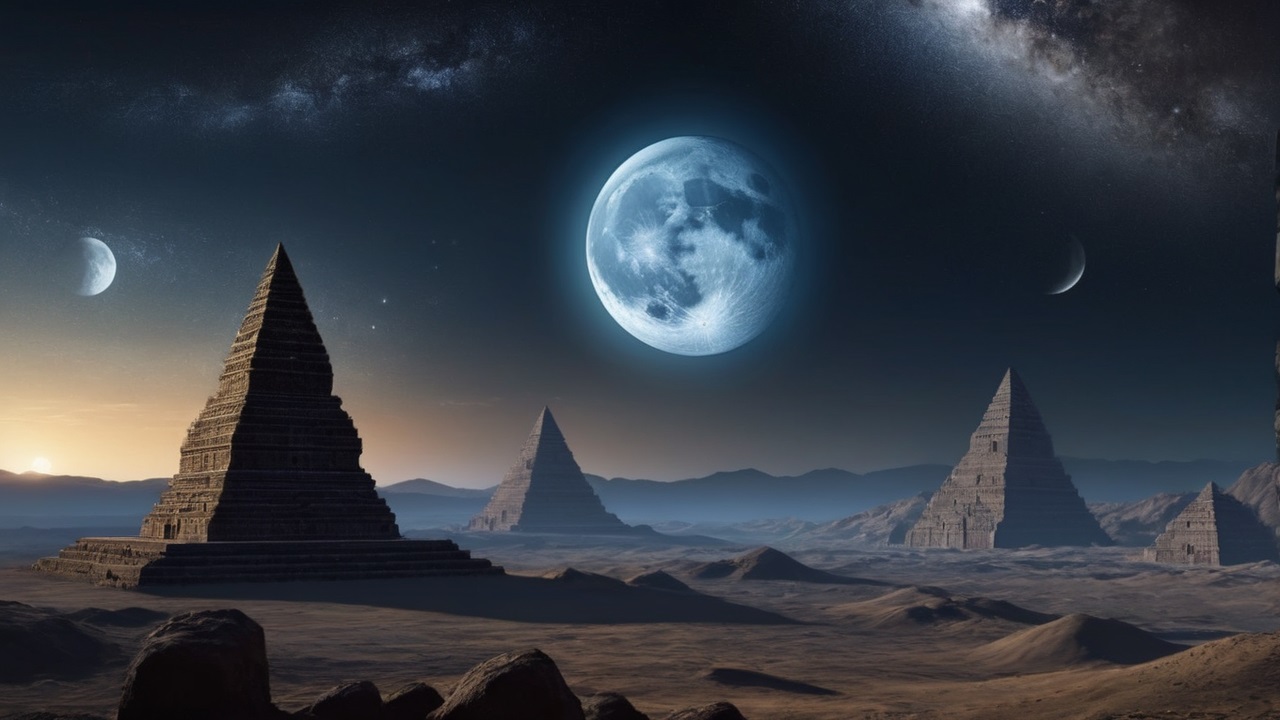
Ancient Biblical scriptures also hint at a time before the Moon. In the Book of Job, it is written that the Lord “makes peace in the heights” during a period “before there was a moon and it did not shine.” Similarly, in the Psalms, there is mention of a time “since the time of the sun and before the time of the moon,” an era described as a “generation of generations” ago—so distant it is almost beyond measure.
These references are not confined to ancient Greece, Rome, or the Bible; they appear in cultures around the world. For example, the oral traditions of the Colombian civilizations in the Bogota highlands speak of the “earliest times when the Moon was not yet in the heavens.”
The Giants Of Ancient Legends?
Looking beyond these regions, Zulu legends from Africa also speak of a time before the Moon, claiming it was brought to Earth many thousands of years ago by two extraterrestrial brothers named Wowane and Mpanku. This detail—particularly the mention of two alien brothers—becomes even more intriguing when considering the possibility that the Pelasgians were not entirely human.
The story bears a striking resemblance to the legends of the Anunnaki from ancient Sumer, which tell of two brothers, Enlil and Enki, who descended from the heavens to rule over the Earth. Many believe these legends describe an extraterrestrial race arriving on Earth hundreds of thousands of years ago.
It’s also worth noting that the language of the Pelasgians was described as “barbaric.” What could this mean? There are a couple of possibilities, especially when considering other ancient legends. This so-called barbaric language might have been incomprehensible, possibly because it was an actual alien language, aligning with the Zulu and Sumerian legends.
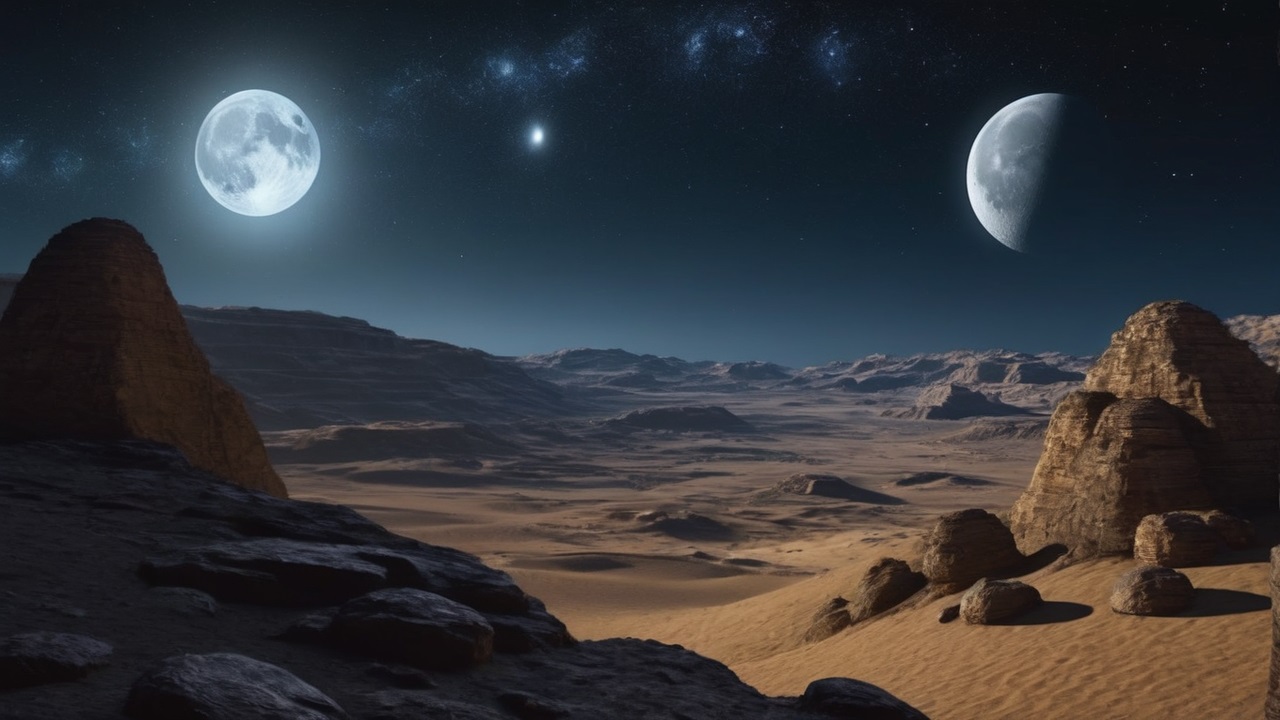
Alternatively, we might interpret this description more literally and consider that the Pelasgians were the giants of ancient myths and creation stories found worldwide. Could some of these giants have survived into recorded history?
Perhaps most intriguing are the ancient writings and symbols found in the courtyard of Kalasasaya in Bolivia, a site constructed at least 15,000 years ago. These records claim that the Moon we see today was brought to Earth thousands of years ago, replacing a previous, smaller moon that had been orbiting the planet until then.
This idea is fascinating because it suggests an intelligent operation behind the Moon’s arrival and might explain how life existed before the current Moon appeared—because the earlier moon provided enough stabilization for life to persist. It’s possible that the arrival of the new Moon triggered cataclysmic events, leading to the disasters mentioned in many creation stories around the world.
Destroyed Historic Records
One of the most frustrating challenges for historians and researchers studying the great civilizations of the Americas is the extent to which Spanish conquistadors destroyed their official histories and writings during the colonization of the Americas. The loss of these records leaves us to only speculate on what they might have revealed, perhaps even insights into a time before the Moon.
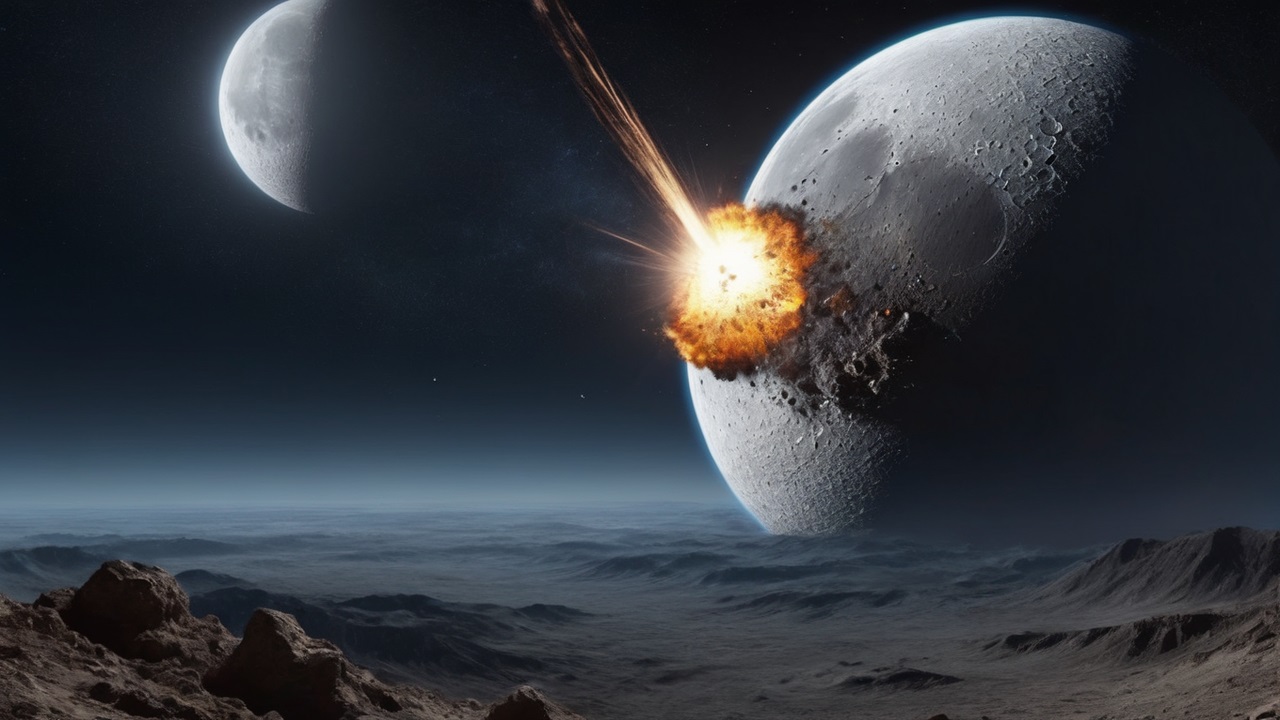
We know that our Moon is indeed an anomaly, particularly in terms of how it formed or arrived in Earth’s orbit. Much of what we claim to know about its origins is largely speculative. Despite being educated and well-considered, these theories may not be more credible than the ancient creation stories and legends that speak of a time before the Moon. These ancient accounts might deserve more serious consideration than they currently receive.
It’s also important to remember that in ancient times, writing was not a widespread activity, as it is today. The act of recording information was costly, whether it involved stone, clay tablets, parchment, or paper. As a result, writing was reserved for a select few and often for specific, significant purposes. We know, for instance, that the record keepers of ancient Rome employed a rigorous “fact-checking” process before anything was officially documented and preserved. It’s reasonable to assume that many other ancient civilizations adhered to similar practices.
Many Unanswered Questions
With this in mind, it’s reasonable to approach the official records of ancient civilizations with a more serious perspective, considering them as possible facts rather than dismissing them as mere myths. It’s likely that these legends contain much more truth than many would assume.
Could it be that there was indeed a time when a civilization existed on Earth without a moon, or with a different one from the moon that now oversees humanity? Could this civilization have even played a role in bringing our current moon into orbit, perhaps to ensure that human life could thrive?
Is it possible that this civilization was the ancestor of the gods described in ancient myths? And if so, where did this civilization originate? Were they native to Earth, or as many legends and creation stories suggest, did they come from the heavens—ultimately, from another part of the universe?
As strange as it might seem to some, could an extraterrestrial civilization have landed on Earth hundreds of thousands, if not millions, of years ago when there was no moon in the sky? And could these alien visitors have been responsible for shaping the world as we know it today, including the development of human civilization?
A History Even Stranger Than We Can Imagine?
Is it even possible, as some researchers have suggested, that the Moon was constructed by human beings from the future who traveled back thousands or even millions of years into the past?
Do such theories lean toward the idea of creationism? While they may do so in a technical sense, they differ significantly from the traditional understanding of the concept. Instead of attributing the Moon’s existence to a divine presence, these theories suggest it could be the work of advanced intelligence—whether human, extraterrestrial, or even artificial.
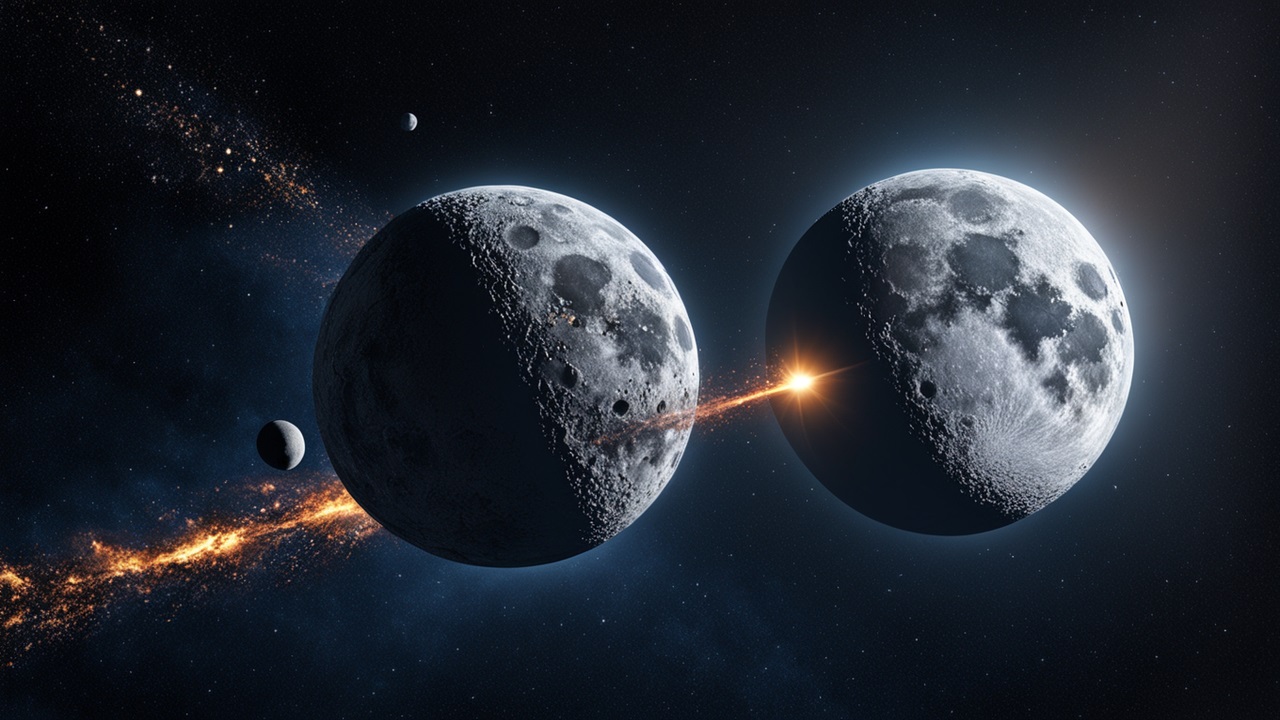
If there’s any truth to these theories, we must ask: What is the Moon really? Is it merely a natural satellite, or could it be something far more complex and purposeful? Might it hold more secrets than we can currently fathom? As always, the questions far outnumber the answers, and the possibilities seem endless.
Ultimately, should we take the numerous legends and writings that claim the Moon wasn’t always in Earth’s skies more seriously and investigate them further? These ancient accounts might reveal much more about the time before recorded history than many are willing to acknowledge. If our ancestors left behind oral traditions that later became ancient texts to inform us of our origins and the circumstances surrounding them, then it is our responsibility to listen and understand these messages, preserved and passed down through the ages, perhaps even from a time before the Moon.
What We Know Is Only Guesswork
The fact is, for that we “know” about the Moon and its history, much of it is guesswork, albeit, educated guesswork, particularly when it comes to how the moon was formed and came to be in its orbit around the planet, and what might have existed before that.
Several researchers, for example, have put forward that the Earth could have had several smaller moons before the formation (or arrival) of our current moon. [2] Could it be that these smaller moons could have sustained life – human life – before the arrival of our current moon? Admittedly, this is wild speculation and highly unlikely, but the many legends of a time before the moon should perhaps alert us to an unknown void in human history.
We might also imagine, if there was another moon before our own, or several smaller ones, perhaps the formation of our moon did bring significant upheaval here on Earth. After all, there are many legends of such cataclysmic events occurring deep in pre-history. And these legends go back many thousands of years and come from all over the world. Could that be suggestive of some kind of significant event thousands and thousands of years ago, an event that was then recalled as a legend by the descendants of the survivors of that once thriving, speculative civilization?
Indeed, while the legends of a time before a moon could be nothing more than mere legends, we just might find they contain partial truths that will assist in shedding light on human life long before recorded history.
The video below examines the notion of a time before the Moon a little further.
Expert Opinion
Beneath the wealth of ancient texts, from the Greek philosopher Aristotle to biblical references, lurks the provocative idea that Earth once existed without our familiar lunar companion. Arcadian legends speak of once-thriving communities predating the Moon, while modern investigators point to worldwide mythology that hints at cataclysmic cosmic events. At first glance, these stories offer a remarkable puzzle for historians, begging questions about our planet’s hidden chronicle.
Critics argue that such claims often stem from symbolic inflection rather than literal fact, pointing out the Moon’s crucial gravitational role in stabilizing Earth’s axis. Scientific consensus suggests our lunar neighbor formed roughly 4.5 billion years ago, making a pre-lunar era of human presence extremely unlikely. Nevertheless, the persistent legends—echoed across continents—entice many researchers to keep exploring the possibility of lost epochs in our planet’s timeline.
While intriguing lore persists about a possible pre-lunar age, lack of scientific corroboration makes a firm conclusion elusive.
Marcus Lowth is an expert on this topic and has over 20 years experience studying and reporting in these fields. Marcus has written several books and appeared on TV shows as an expert investigator discussing these topics.
References
| ↑1 | A time before the moon?, Thomas Blum, Medium https://tombl2007-thomas.medium.com/a-time-before-the-moon-8fa11555c113 |
|---|---|
| ↑2 | Second moon may have collided with our moon, says scientists, The Guadian https://www.theguardian.com/science/2011/aug/03/second-moon-collision |
Fact Checking/Disclaimer
The stories, accounts, and discussions in this article may go against currently accepted science and common beliefs. The details included in the article are based on the reports, accounts and documentation available as provided by witnesses and publications - sources/references are published above.
We do not aim to prove nor disprove any of the theories, cases, or reports. You should read this article with an open mind and come to a conclusion yourself. Our motto always is, "you make up your own mind". Read more about how we fact-check content here.
Copyright & Republishing Policy
The entire article and the contents within are published by, wholly-owned and copyright of UFO Insight. The author does not own the rights to this content.
You may republish short quotes from this article with a reference back to the original UFO Insight article here as the source. You may not republish the article in its entirety.

